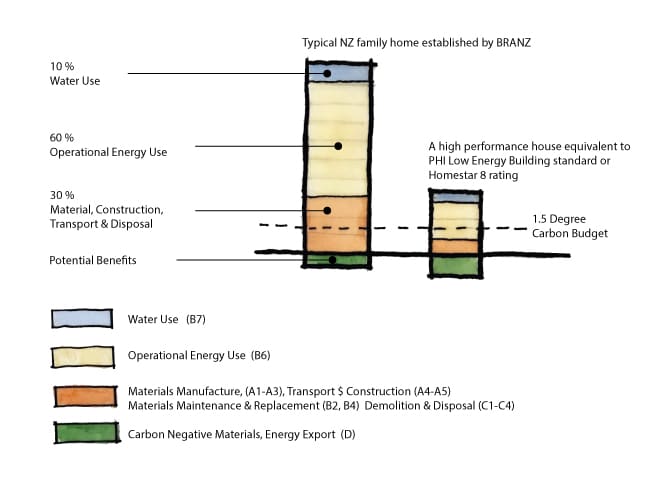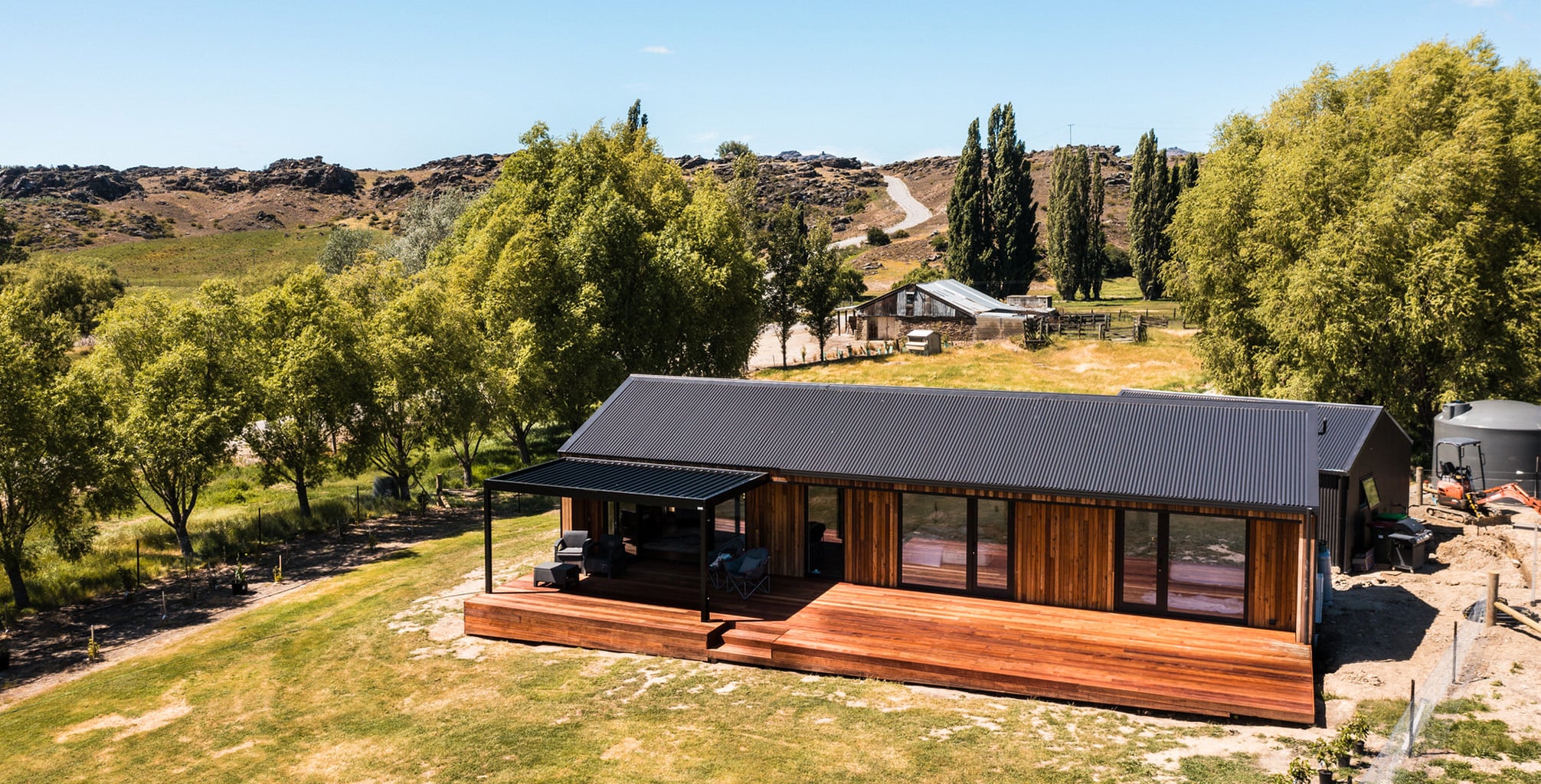Low-Carbon buildings
“The twin crises of climate breakdown and biodiversity loss are the most serious issue of our time. Buildings and construction play a major part, accounting for nearly 40% of energy-related carbon dioxide (CO2) emissions whilst also having a significant impact on our natural habitats”.
— Architects Declare (nz.architectsdeclare.com)
The science is clear – we need to stop talking about reducing Carbon emissions in buildings, and start acting now. Respond Architects are a signatory to Architects Declare, and are committed to reducing embodied and operational carbon in our projects. The only way to reduce Carbon emissions in a project is to first measure them, which we do in-house by carrying out Life-cycle Carbon Analysis (LCA) using specialist software. From here we can make recommendations in how best to effect significant Carbon reductions in your project.
So when we talk about Carbon in buildings, what do we mean?
According to the reference buildings established by the Building Research Association New Zealand (BRANZ), a ‘typical’ single family home generally has carbon emissions of approximately 600% – 900% over the maximum carbon budget to keep climate change at no greater than 1.5 degrees.
The typical distribution of the carbon emissions in a current typical single-family home can be observed as follows:
— 60% of the total emissions come from operational energy use and power consumption
— 30% comes from embodied carbon in raw materials, manufacturing, transport, construction, maintenance, replacement, and end of life disposal combined
— 10% comes from the operational water consumption

Our team can simplify the decarbonisation process in your project
Having extensive experience with Passive House and Homestar projects, our team can guide you through the process of reducing the carbon emissions in your project. We use PHPP energy modelling and LCAQuick carbon modelling tools to help you make informed decisions throughout the design stages.
Spoiler alert – There are many low hanging fruits to make significant Carbon reductions!
— Energy efficiency
By halfing your power bill, you will also half your carbon emissions related to operational energy. We can achieve this outcome by designing high performing building thermal envelopes together with efficient space and hot water heating. As a side benefit, energy efficient buildings are also an environment where people thrive – better for people and planet!
— Sustainable materials
Low impact and low maintenance materials do matter. LCAQuick can help us profile the top 10 most impactful materials, which guides informed decisions such as the use of heat pumps with CO2 refrigerant that has 675 times less global warming impact than those which use HFC-32 refrigerant.
— Water use
Our Homestar team has established an exemplar specification of all types of water fittings and appliances to effectively promote lower water usage. Rain-water harvesting is another powerful tool.
— Photovoltaics
Contrary to popular opinion, our national electricity grid is not 100% renewable energy. As a country, our electricity demands are projected to grow significantly (in part due to the Electric Vehicle revolution). Investing in Photovoltaics (PV) for your project helps accelerate the decarbonisation of the grid. PV itself can be a relative carbon negative element to improve the overall emission balance of the building.
Go further and get credits
Carbon modelling is for every project, no matter how big or small. But if you are aiming for certification, the carbon modelling and decarbonisation process will also earn you points towards the following:
— Homestar – 6 carbon modelling and decarbonisation related points
How Vulcan Timber positively impacts a building Life Cycle Assessment (LCA)
Contact us to discuss your next project on (09) 913 0400 or email hello@respondarchitects.co.nz.
Project locations



